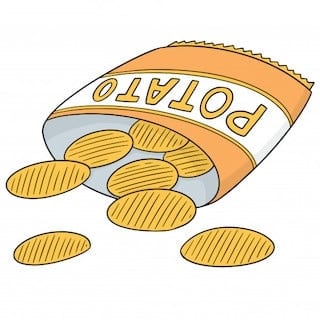What is Marginal Utility?
In Economics, there is a study that is made to understand the relationship between the degree of satisfaction of getting one more additional unit of a good or service, and the willingness to pay for it.
This degree of satisfaction, this gain of additional benefits and value is measured in a unit is called Util.
The work Marginal refers to one more unit of (something). In this specific case: utility.
Let’s go through an example:
MARGINAL UTILITY TABLE

Example:
If you have $5.00 to spend on two goods, how do you decide to spend it?
Q represents Quantity measured in units, MU represents Marginal Utility measured in Utils.
What is a Util and how do you come up with the number 100 for one unit of chocolate bars? This is a symbolical value, but important to our study. Let’s say between one fruit and one chocolate: Which one would you start of with? Let’s say your answer would be a fruit? So there is a higher util for a fruit. In this specific case we start with attribute it a value of 120 and 100 for a chocolate bar.
When you eat one chocolate bar, you are now less hungry than before, so when presented with another chocolte bar it has less utility for you at that point, so the marginal utility( the util of one more unit) goes down. This process is the same for one more unit: you already ate two chocolate bars, so the third has less marginal utility than the second and so on.
If you ate 3 chocolate bars your Total Utility is the sum of all the Marginal Utility values up until and inclusive of that point.
In the case of eating three chocolate bars, teh Total Utility is 100+80+60 = 240 Utils

A characteristic of the Total Utility is that it start of with a positive slope, hits a maximum and then starts decreasing and becomes negative. This is called the diminishing marginal utility. This is because the degree of satisfaction is higher in the beginning and then keeps getting lower (your are now stuffed with chocolate).
So essentially the Law of diminishing marginal utility state that the satisfaction of consuming additional units of a good will decrease as consumption of the good increases.

Coming back to our example, a typical question you see in exams is:
“How to you maximize the utility between 2 products when you have a given budget?”
You do this by assigning a $ amount to each product.
Let’s say the chocolate bars are $1.00 per bar and the fruits are $2.00 per Kg.
Since you have $5.00, how are you going to spend it so you can maximize your Total Utility?
The question you have to keep asking to solve this problem is where do you get the most satisfaction per $?

By looking at the table we can see that with our first $, we get more value for 1 chocolate bar than for fruit, so our first $1.00 is spent on a chocolate bar
With our second $, the highest Marginal Utility Value per $ is a second chocolat bar.
With our third $, the MU/$ is the same for either Chocolate Bars or Fruit.
With our fourth and fifth $ we spend it on fruit as it has a MU/$ of 60 comparing to 40/$ from a chocolate bar. And since it costs $2.00 per quantity, we have used our Total Budget by exercising Utility Maximization.

